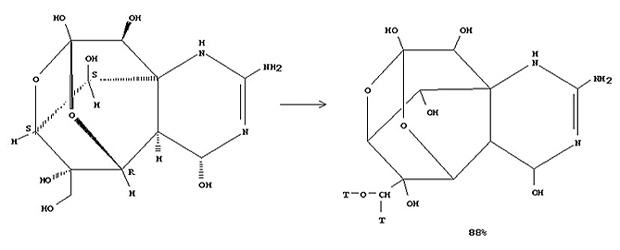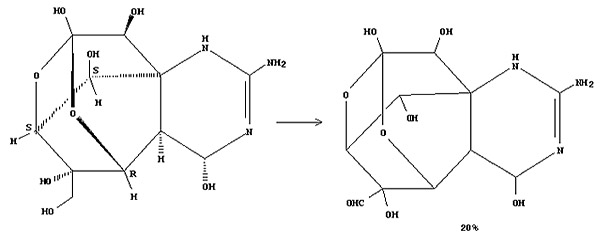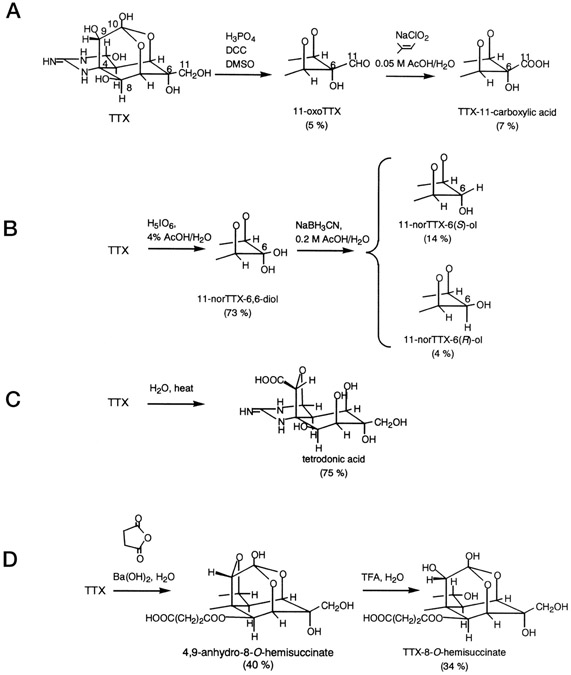|
-
Derivatives -
Tetrodotoxin (TTX) usually
exists as a mixture of its derivatives. Due to variations in its
structure, some of these analogues
are difficult to detect. It derivatives can be classified under
two categories íV naturally occurring and synthetic derivatives.
Naturally Occurring Derivatives
- Isolated from pufferfish, newts and frogs
- Detected by spectroscopic methods
Analogous of Tetrodotoxin has been identified by a combination of
liquid chromatography
and electrospray ionization mass spectrometry. This method involves a
reversed phase
column with long carbon chains and a mobile phase including an ion-pair
reagent such
as ammonium heptafluorobutyrate.
Synthetic Derivatives (prepared by chemical
modification of the structure)
There are various synthetic routes to obtain derivatives of
Tetrodotoxin. One of the most
well-known techniques to achieve this is via the Pfitzner-Moffatt
oxidation. 2 examples of
this method are shown below. Through
the Pfitzner-Moffatt reaction, 5 derivatives were also
prepared by covalent attachment of
either lysine, glycine, beta-alanine or ethylenediamine
to the oxidized toxin.
Example 1: 2 step
Pfitzner-Moffatt oxidation

Step 1
Reagents
: H2O2, FeSO4.7H2O
Solvents : H2O, AcOH
Step 2
Reagents : NaBT4
Solvents : AcOH,H2O,MeCN
Example 2: 1 step
Pfitzner-Moffatt oxidation

Reagents : DMSO, H3PO4, DCC
Solvents : CF3COOH
Besides the
Pfitzner-Moffatt oxidation, TTX derivatives can also be obtained by
other methods.
The diagram below shows 4 ways of synthesizing 7 different TTX
derivates, and their respective yields.

"Synthetic
TTX derivatives"
A, 11-oxoTTX and TTX-11-carboxylic acid; B,
11-norTTX-6,6-diol, 11-norTTX-6(S)-ol,
and 11-norTTX-6(R)-ol; C, tetrodonic acid; D, TTX-8-O-hemisaccinate.
- http://jpet.aspetjournals.org/cgi/content/full/289/3/1688
Back to
Top
|